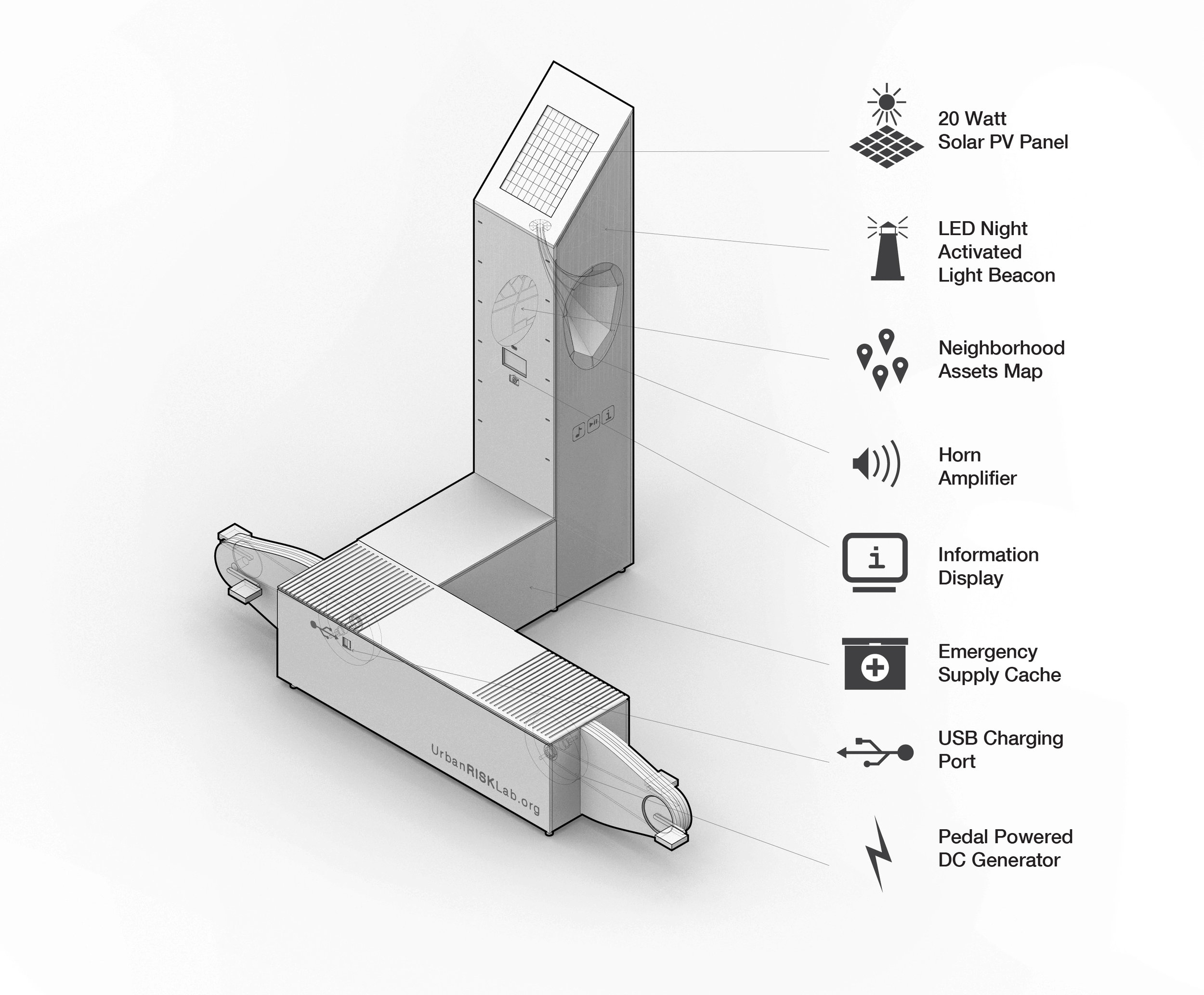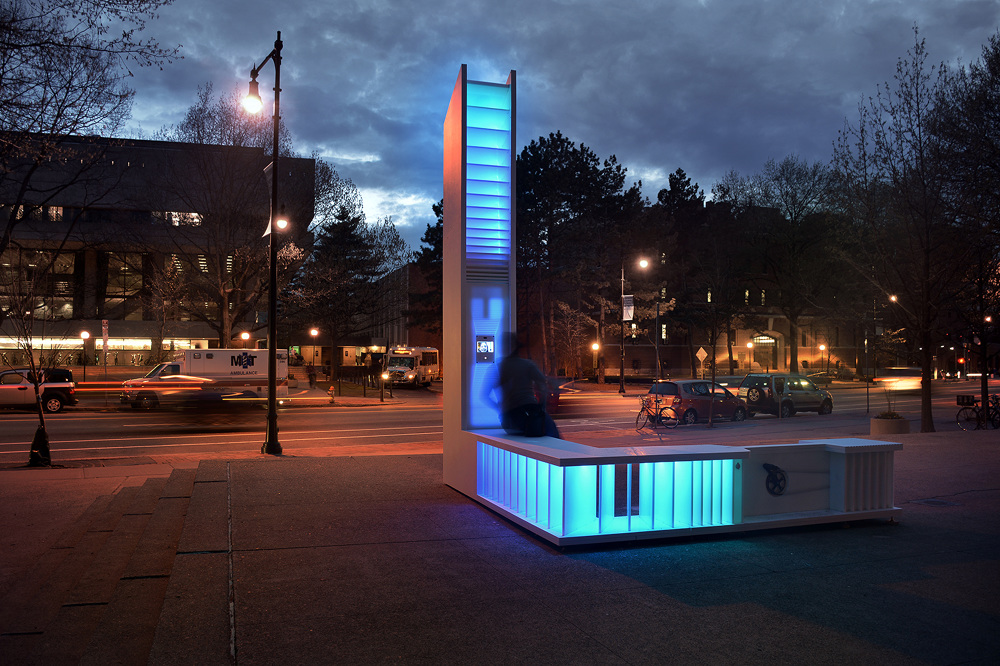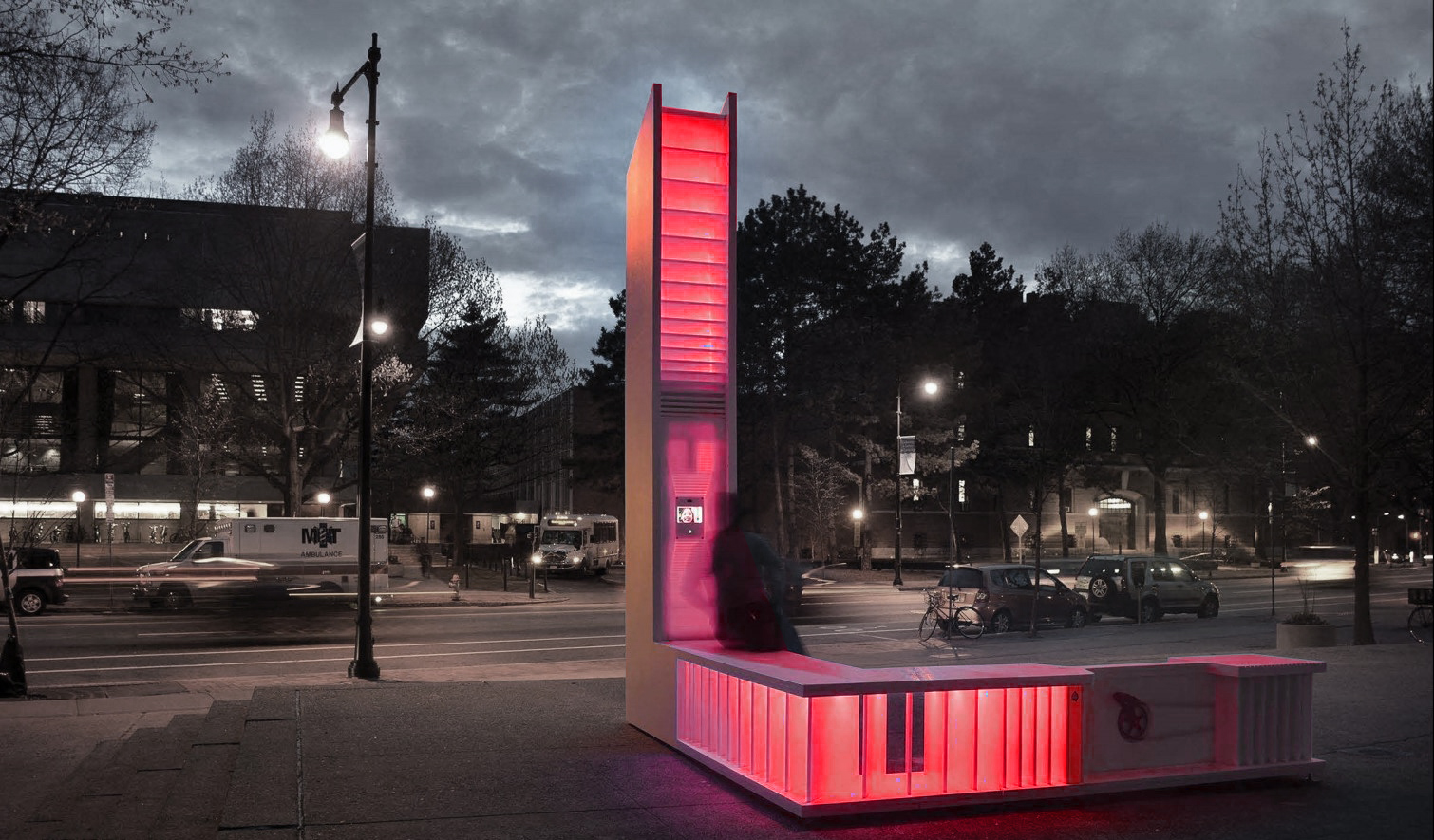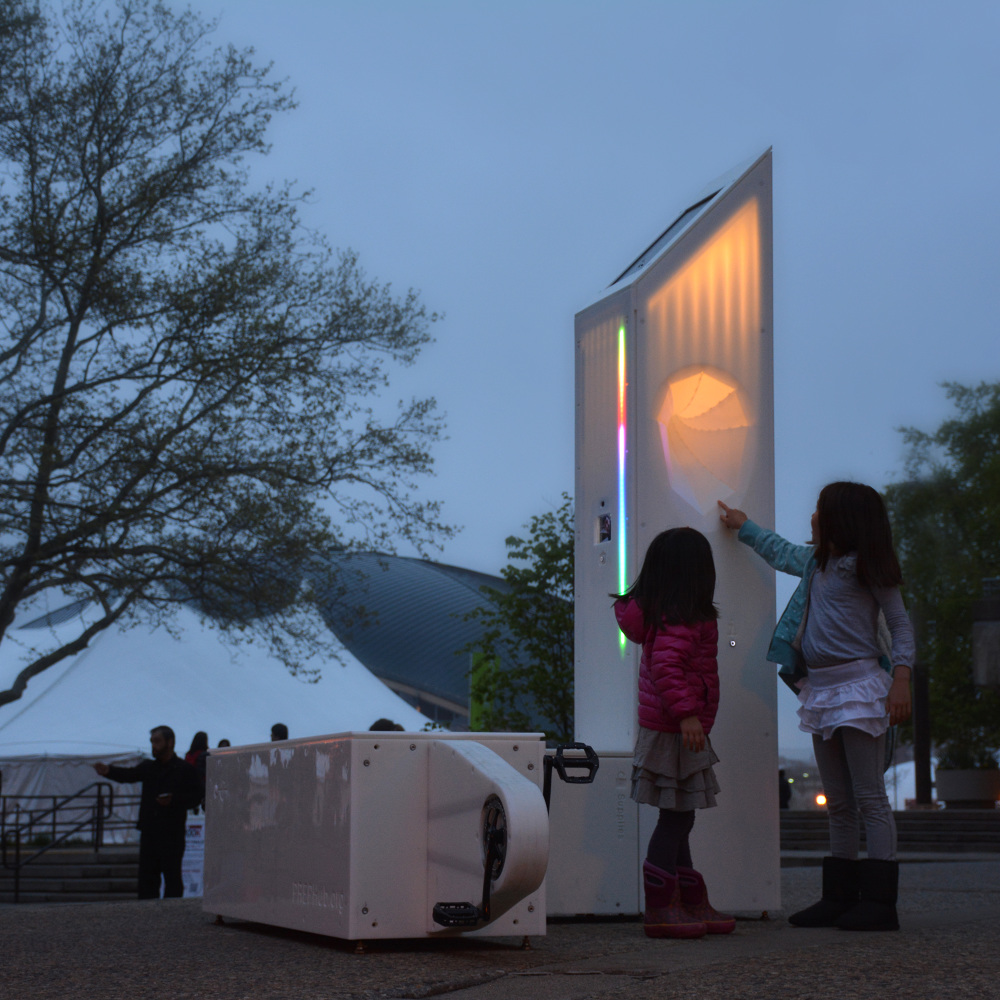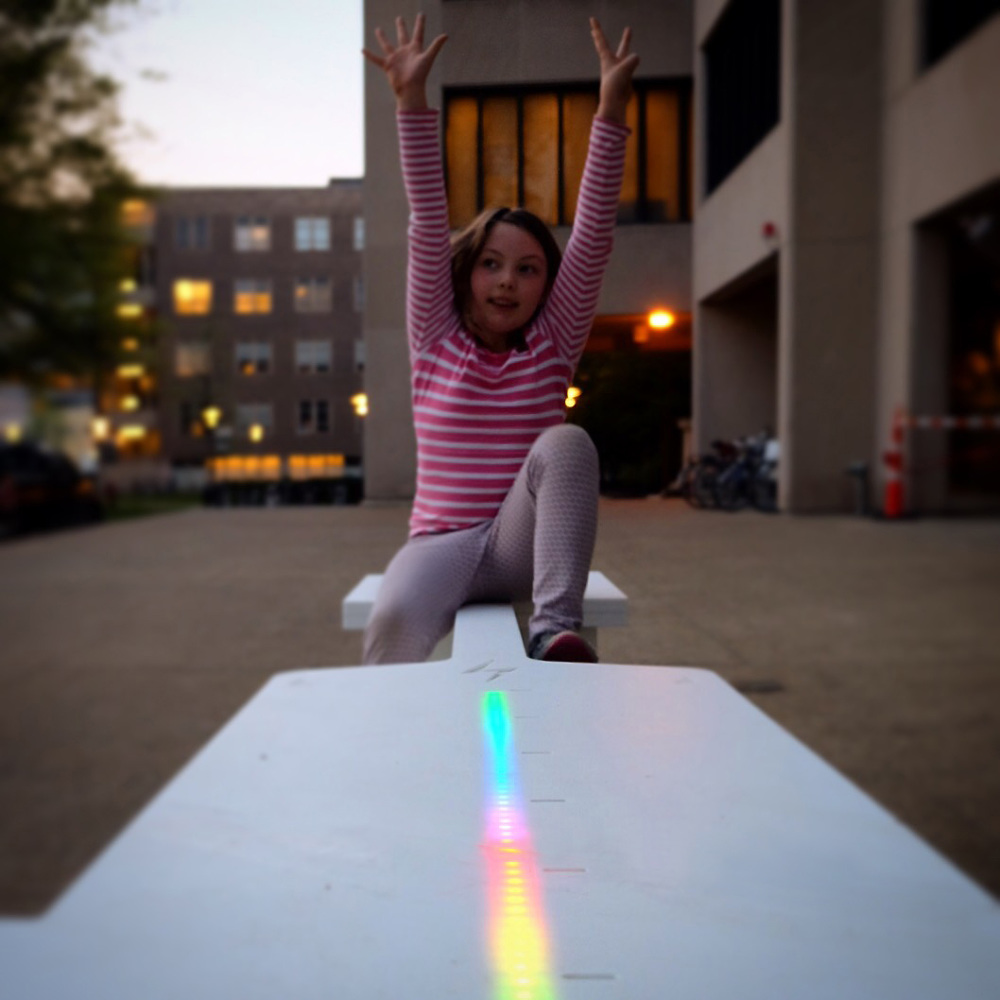prephub
PREPHubs are a new kind of infrastructure designed to increase disaster resilience. Composed of flexible kit of parts, each component serves the community in both everyday and emergency scenarios.
These prototypes are part of an ongoing research project exploring ways to integrate disaster preparedness and response technologies into public infrastructure to facilitate community resilience. Able to operate entirely off-grid during a disaster, each Hub is built around the short-term and immediate need for energy, communication, water, food, and supplies. PREPHubs are strategically placed to activate public spaces, while encouraging neighborhoods to build preparedness into their everyday lives. Should a disaster occur, they become the gathering places to access information, resources and connect with loved ones.
The Urban Risk Lab has been researching the effects of earthquakes on cities since the 1995 earthquake in Kobe. One of the key lessons evidenced through multiple research projects (San Francisco 1906, Japan-Kobe 1995, Chile 2010, New Zealand 2011, Nepal 2015, Japan-Kumamoto 2016) shows that public open space and the infrastructure that supports it are critical post disaster. Large parts of the population end up evacuating to open spaces to be safe through aftershocks, to find relatives and connect with emergency relief efforts.
PREPHubs make the connection between open space infrastructure and local resilience before an earthquake, so that community members know where to safely evacuate with family and friends. By using the communications and power generation technology in a public space on a regular basis, residents become familiar with how to use the infrastructure should it be needed after a disaster.
MIT Urban Risk Lab: Miho Mazereeuw, David Moses, Justin Lavallee, Aditya Barve, Saeko Nomura Baird, Evan Owens, Seungho Park, Jongwan Kwon, Elizabeth Yarina, Abraham Quintero, Ananya Nandy, Alexa Jan
MIT Lincoln Lab: Adam Norige, Brice Maclaren, Tom Smith, Christopher Budny, Peter Klein, Andrew Weinert, Ed Orchanian
Project Partners: City of Portland, Portland General Electric, Portland State University
Supported by: MIT Design X, TATA Center of Technology and Design, MIT International Design Center, Council for the Arts at MIT, Seifel Fund Research Grant, Lincoln Laboratory


